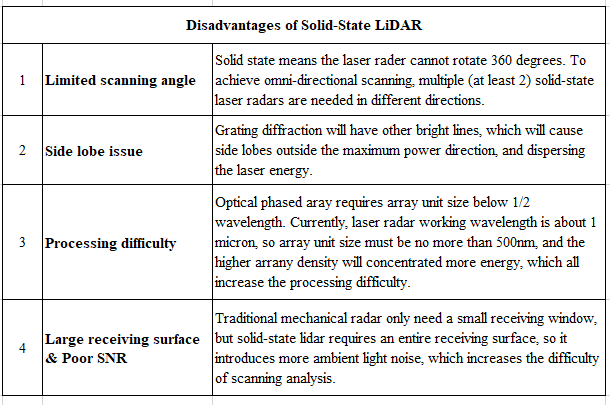
Solid-state LiDAR is LiDAR on a microchip.
For example: The computer microchip took all the separate transistors, resistors, and capacitors necessary for a working computer and integrated them into a single silicon chip.
Advantages and Disadvantages of Solid-State LiDAR


In the future, solid-state, miniaturization, and low-cost will be the development trend of laser radar, but at present, mechanical laser radar is still the mainstream.
After years of development, the basic framework of solid-state lidar is clear, the following are the current mainstream three options:
1- Micro-ElectroMechanical System (MEMS)
Which uses micro-mirrors to directionally control emission and focus.
Though mirror to achieve vertical one-dimensional scanning, then horizontal rotating machine with 360 degree to complete horizontal scanning.
2- Optical Phased Array (OPA)
It mainly used multiple light sources to make an array, the main beam having a specific direction is synthesized by controlling the difference in illumination time of each light source.
With controlling, the main beam can scan the target in different directions.
3- Flash
The principle of Flash Lidar is also flashing. It does not scan like MEMS or OPA.
Instead, it directly emits a large laser that covers the detection area in a short time, and then completes the surrounding environment with a highly sensitive receiver, then drawing of images.
For more info please feel free to contact LPO!
References:
1- https://www.spar3d.com/blogs/the-other-dimension/vol13no50-solid-state-lidar-a-new-era-of-3d-scanning/
2- https://www.allaboutcircuits.com/news/solid-state-lidar-faster-cheaper-better/